RIDGID 604 Handleiding
Bekijk gratis de handleiding van RIDGID 604 (8 pagina’s), behorend tot de categorie Niet gecategoriseerd. Deze gids werd als nuttig beoordeeld door 45 mensen en kreeg gemiddeld 4.5 sterren uit 23 reviews. Heb je een vraag over RIDGID 604 of wil je andere gebruikers van dit product iets vragen? Stel een vraag
Pagina 1/8

600 Hand Tube Bender Instruction Sheet
Figure 2 – Vise Mounting Point Figure 3
2. Move Carriage Handle and Tube Latch away from Form.
3. Position tubing in Form groove and secure tubing in Form with
Latch (Figure 3).
4. Lower Carriage Handle until the “0” Line on the Carriage aligns with
the 0° designation on the Form (Figure 4).
5. Rotate the Carriage Handle around the Form until the “0” Line on the
Carriage aligns with the desired degree of bend on the Form (Figure
5).
Figure 4 Figure 5
Measured Bends Relative to Other
Features (Tube ends, Bends, etc.)
For 90° Bends:
• Mark the tube at the desired distance (X) from the feature (end of
tube, bend, etc.). The center of the leg of the bend will be this dis-
tance from the feature.
• Place the tube in the bender as described in Steps 1-5 above.
• If the feature is to the of the mark LEFT (see Figure 6 – Before),
align the mark on the tube with the “ ” line on the Carriage.L
• If the feature is to the of the mark RIGHT (see Figure 8 – Before),
align the mark on the tube with the “ ” line on the Carriage.R
Figure 6 – Before Figure 7 – After
Figure 8 – Before Figure 9 – After
• With the mark on the tube appropriately aligned, move the Carriage
so that the “0” Line aligns with the 90 degree line on the Form. (See
Figures 7 and 9 – After).
WARNING
Read these instructions and the warnings and
instructions for all equipment being used before
using to reduce the risk of serious personal injury.
• Always use safety glasses to reduce the risk of
eye injury.
• Do not use handle extensions (such as a piece
of pipe). Han dle extensions can slip or come off and increase
the risk of serious injury.
If you have any question concerning this RIDGID®product:
– Contact your local RIDGID distributor.
– Visit www.RIDGID.com or www.RIDGID.eu to find your local RIDGID
contact point.
– Contact Ridge Tool Technical Service Department at rtctechservic -
es@em erson.com, or in the U.S. and Canada call (800) 519-3456.
The RIDGID®600 series lever benders are designed to easily bend
materials such as copper, steel, stainless steel and other hard metal
tube to a maximum of 180°. Built-in rollers and a heavy-duty handle
design combine to produce high quality bends with greatly reduced
effort when compared to conventional benders.
Figure 1 – 600 Series Bender
Selection of appropriate materials and installation, joining
and forming methods is the responsibility of the system designer and/or
installer. Selection of improper materials and methods could cause sys-
tem failure.
Stainless steel and other corrosion resistant materials can be contami-
nated during installation, joining and forming. This contamination could
cause corrosion and premature failure. Careful evaluation of materials
and methods for the specific service conditions, including chemical and
temperature, should be completed before any installation is attempted.
Inspection/Maintenance
The bender should be inspected before each use for wear or damage
that could affect safe use. Clean as needed to aid inspection and to pre-
vent handles and controls from slipping from your grip during use.
Make sure the bender is complete and properly assembled. If any prob-
lems are found, do not use until the problems are corrected. Lubricate
all moving parts/joints as needed with a light lubricating oil, and wipe
any excess oil from the bender.
Operation
The 600 Series Lever Benders can be used either hand held or with the
bender mounted in a vise. Vise mounting is especially useful when
bending hard or thick walled materials.
Spring Back
All tubing will exhibit spring back after a bend is completed. Softer tub-
ing, such as copper, will have less spring back than harder tubing, such
as stainless steel. Experience will help you predict the amount of spring
back. Depending on tubing material and hardness, expect to overbend
approximately 1° to 3° to compensate for spring back.
General Operating Instruction
1. Grasp bender by the Form Handle or mount the bender in vise.
(Figure 2).
Carriage Handle
Tube
Latch
Form Handle
NOTICE
Form
Carriage
Grip In
Vise
Mark On
Tube
X
L Line
X
0 Line
X
Mark On
Tube
R Line
X
Printed 12/15
EC38632
999-999-403.10
REV. C
©2011, 2015, RIDGID, Inc.
The Emerson logo and RIDGID logo are registered trademarks of Emerson Electric Co. or RIDGID, Inc. in the U.S. and other countries.
All other trademarks belong to their respective holders.

2
600 Hand Tube Bender Instruction Sheet
For 45° Bends:
• Mark the tube at the desired distance (X) from the feature (end of
tube, bend, etc.). The center of the arc segment will be this distance
from the feature.
• Place the tube in the bender as described in Steps 1-5 above.
• Align the mark on the tube with the 45° line on the Carriage (see
Figure 10).
Figure 10 – Before Figure 11 – After
• With the mark on the tube appropriately aligned, move the Carriage
Handle so that the “0” Line aligns with the 45 degree line on the Form.
Making Bends 90° to 180°
Follow the steps 1-5 for making 90° bends.
1. When the “0” Line on the Carriage reaches the 90° mark on the
Form, turn the carriage handle so that the pin moves the “unlock”
Position (Figure 12).
Figure 12 – UNLOCK Figure 13 – Rotate Handle
2. Rotate the handle around the Carriage until the 90~180° triangle
mark on the Handle aligns with the triangle mark on the Carriage
(Figure 13).
3. Turn the Carriage Handle so that the pin moves toward the “lock”
position. Make sure the Handle is secure to the Carriage. (Figure
14).
Figure 14 – LOCK Figure 15
4. Swing the Carriage Handle around the Form until the “0” Line on
the Carriage aligns with the desired bend angle (Figure 15). The
Handles will not cross.
Adjustment (Gain) Calculations
When determining tube bend locations, adjustment factors must be
considered to achieve proper layout. Adjustment (Gain) is the difference
in the length of tubing used in a radiused bend compared to the length
of tubing required in a sharp bend, when measured from one end to
another.
The distance around a radiused bend is always less than a sharp bend.
The adjustment factor is determined by the radius of the tube bender
and the number of degrees of the bend. See the following chart for ad -
justment factors. Adjustment factors are subtracted from the center line
distances (see the example).
Bend Adjustment Chart
Bender Specification
Supporting Products Recommendation
Cat. No. 31803 65S Quick-Acting Tubing Cutter
Cat. No. 29963 35S Stainless Steel Tubing Cutter
Cat. No. 29993 227S Stainless Steel Inner-Outer Reamer
Cat. No. 29983 223S Stainless Steel Inner-Outer Reamer
Cintreuse manuelle n° 600 –
Fiche d’utilisation
AVERTISSEMENT
Avant d’utiliser cet appareil, et afin de limiter les
risques de grave blessure corporelle, familiari sez-
vous avec les consignes et avertissements le con-
cernant, ainsi que ceux concernant l’ensemble du
matériel utilisé.
• Portez systématiquement des lunettes de
sécur ité afin de limiter les risques de lésions
oculaires.
• Ne jamais utiliser de rallonges tubulaires ou autres sur les
manches de l’appareil. De telles rallonges pourraient glisser
Mark On
Tube
X
45 Line
X
Model No. 603/604 605/606 608 606M 608M/610M 612M
Tube OD 3/16", 1/4"5/16, 3/81/26mm 8mm, 10mm 12mm
Bend Radius 5/815/1 6 11/216mm 24mm 38mm
Degree Bend Adjustment (Inches) Bend Adjustment (mm)
90 0.27 0.40 0.65 6.88 10.32 16.34
85 0.22 0.33 0.52 5.59 8.38 13.27
80 0.18 0.26 0.42 4.52 6.78 10.73
75 0.14 0.21 0.34 3.61 5.42 8.58
70 0.11 0.17 0.27 2.86 4.29 6.80
65 0.09 0.13 0.21 2.24 3.36 5.32
60 0.07 0.10 0.16 1.72 2.58 4.08
55 0.05 0.08 0.12 1.32 1.98 3.14
50 0.04 0.06 0.09 0.96 1.44 2.27
45 0.03 0.04 0.06 0.69 1.03 1.63
40 0.02 0.03 0.05 0.48 0.72 1.15
Catalog Model Capacity Bend Weight
No. No. (O.D.) Radius lbs. kgs.
38028 603 3
/16"5
/8" 1.68 0.76
38033 604 1
/4"5
/8" 1.68 0.76
38038 605 5
/16"15 /16" 4.1 1.84
38043 606 3
/8"15 /16" 4.1 1.84
38048 608 1
/2" 1
1/2
" 6.1 2.76
38053 606M 6mm 16mm 1.68 0.76
38038 608M 8mm 24mm 4.1 1.84
38058 610M 10mm 24mm 4.1 1.84
38063 612M 12mm 38mm 6.1 2.76
1.50
45°
2.00
3.00
1 .00
REFERENCE MARK
EXAMPLE:
TUBE SIZE = 3/8" Adjustment for 90° bend = 0.40 (x 1)
BEND RADIUS = 15/16 " Adjustment for 45° bend = 0.04 (x 2)
(Values Found In Adjustment Chart)
ACTUAL TUBE = Sum of Centerline Dimensions - Adjustments for Bends
LENGTH REQUIRED = 2.00 + 3.00 + 1.50 + 1.00 - 0.40 - 0.04 - 0.04 =
= 7.02"

Figure 2 – Point de serrage en étau Figure 3
4. Rabattez le manche du porte-galet jusqu’à ce que le repère « 0 »
du porte-galet s’aligne avec celui de la matrice (Figure 4).
5. Continuez de rabattre le manche du porte-galet jusqu’à ce que son
repère « 0 » s’aligne avec le repère de rayon de courbure voulu de
la matrice (Figure 5).
Figure 4 Figure 5
Cintrages mesurés à partir d’éléments
existants (raccords, coudes, etc.)
Coudes à 90° :
• Marquez le tuyau à la distance voulue (X) en partant de l’élément
existant (raccord, coude, etc.). Une fois le tuyau coudé, cette dis-
tance sera à l’axe de son nouveau départ en partant de l’élément
existant.
• Positionnez le tuyau dans la cintreuse comme indiqué aux étapes 1
à 5 ci-dessus.
• Si l’élément existant se trouve à GAUCHE du marquage du tuyau
(Figure 6 – Avant), alignez cette marque avec le repère « » duL
porte-galet.
• Si l’élément existant se trouve à du marquage du tuyauDROITE
(Figure 8 – Avant), alignez cette marque avec le repère « » duR
porte-galet.
Figure 6 – Avant Figure 7 – Après
Figure 8 – Avant Figure 9 – Après
• Une fois les repères correctement alignés, rabattez le porte-galet de
manière à aligner son repère « 0 » avec le repère « 90° » de la
matrice (Figures 7 et 9 – Après).
Coudes à 45° :
• Marquez le tuyau à la distance voulue (X) en partant de l’élément
existant (raccord, coude, etc.). Une fois le tuyau coudé, cette dis-
ou s’échapper, augmentant ainsi les risques de grave bles -
sure corporelle.
Pour de plus amples renseignements concernant ce produit RIDGID®,
veuillez :
– Consulter votre distributeur RIDGID.
– Visitez le site www.RIDGID.com ou www.RIDGID.eu afin de localiser
le représentant RIDGID le plus proche.
– Consulter les services techniques Ridge Tool par mail adressé à :
rtctechservices@emerson.com ou, à partir des Etats-Unis et du
Canada, en composant le (800) 519-3456.
Les cintreuses à levier RIDGID®de la série 600 permettent le cintrage
des tuyaux en cuivre, acier, acier inoxydable et autres métaux durs sur
un maximum de 180°. Des galets incorporés et des manches de qual-
ité industrielle assurent des cintrages de haute qualité avec un effort
considérablement moindre que celui demandé par les cintreuses tradi-
tionnelles.
Figure 1 – Cintreuse série 600
La sélection des matériaux et des techniques d’in-
stallation, de raccordement et de cintrage appropriés reste la respons-
abilité du bureau d’études et/ou de l’installateur concerné. La sélection
de matériaux ou de méthodes de mise en œuvre mal adaptés pourrait
entraîner la défaillance du réseau.
L’acier inoxydable et les autres matériaux anticorrosion risquent d’être
contaminés en cours d’installation, de raccordement ou de cintrage.
Une telle contamination pourrait entraîner la corrosion et la défaillance
prématuré du réseau. Il convient donc d’établir une étude approfondie
des conditions d’exploitation prévues, notamment en matière de pro-
duits chimiques et de température, avant toute tentative d’installation.
Inspection et entretien
La cintreuse doit être examinée avant chaque utilisation pour signes
d’usure ou de détérioration qui pourraient nuire à sa sécurité d’emploi.
Nettoyez la cintreuse afin d’en faciliter l’inspection et l’empêcher de
s’échapper en cours d’utilisation. Assurez-vous que la cintreuse est
complète et correctement assemblée. N’utilisez pas la cintreuse avant
d’avoir corrigé toute anomalie éventuelle. Lubrifiez l’ensemble des artic-
ulations à l’aide d’une huile minérale légère, puis essuyez tous résidus
d’huile éventuels.
Fonctionnement
Les cintreuses de la série 600 peuvent être tenues à la main ou dans
un étau. L’utilisation d’un étau est particulièrement pratique lors du cin-
trage des métaux durs et des tuyaux à parois épaisses.
Effet ressort
Tout tuyau subira un effet ressort (redressement) lors de son cintrage.
Les matériaux moins résistants, tels que le cuivre, subiront moins d’ef-
fet ressort que les matériaux plus durs tels que l’acier inoxydable.
L’expérience vous permettra de mieux évaluer l’ampleur de l’effet res -
sort devant être anticipé. Selon la dureté des matériaux utilisés, il sera
nécessaire d’ajouter entre 1 et 3 degrés de courbure supplémentaire
pour compenser l’effet ressort.
Mode d’emploi
1. Tenez la cintreuse par son manche de matrice ou montez-la dans
un étau (Figure 2).
2. Ecartez le manche du porte-galet pour éloigner le porte-galet et le
loquet à tuyau de la matrice.
3. Positionnez le tuyau dans la gorge de la matrice et arrimez-le à
l’aide du loquet (Figure 3).
600 Hand Tube Bender Instruction Sheet
3
Manche du porte-galet
Loquet
à tuyaux
Manche de matrice
AVIS IMPORTANT
Matrice
Porte-galet
Prise
d’étau
Marquage
du tuyau
X
Repère
« L »
X
Repère
« 0 »
X
Marquage
du tuyau
Repère
« R »
X
Product specificaties
| Merk: | RIDGID |
| Categorie: | Niet gecategoriseerd |
| Model: | 604 |
Heb je hulp nodig?
Als je hulp nodig hebt met RIDGID 604 stel dan hieronder een vraag en andere gebruikers zullen je antwoorden
Handleiding Niet gecategoriseerd RIDGID
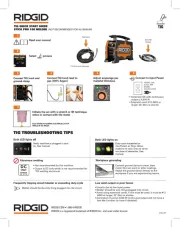
17 Juni 2025

16 Juni 2025

18 Augustus 2024

5 Maart 2024

5 Maart 2024

5 Maart 2024

27 Februari 2024

26 Februari 2024

26 Februari 2024

26 Februari 2024
Handleiding Niet gecategoriseerd
- Sicce
- Digital Watchdog
- Toshiba
- Techni Mobili
- AER
- Welltech
- Hensel
- MOZOS
- Musway
- AEA
- Humminbird
- Magnat
- Creamsource
- G.Skill
- Flama
Nieuwste handleidingen voor Niet gecategoriseerd
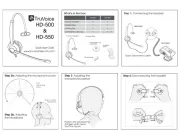
1 Augustus 2025
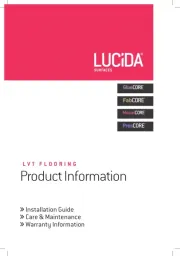
1 Augustus 2025
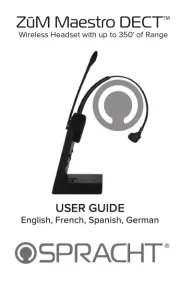
1 Augustus 2025
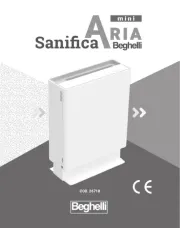
1 Augustus 2025
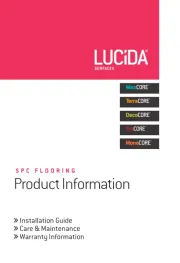
1 Augustus 2025
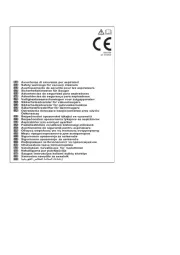
1 Augustus 2025
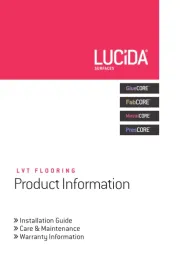
1 Augustus 2025
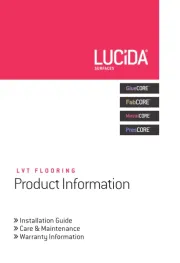
1 Augustus 2025
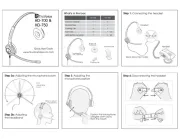
31 Juli 2025
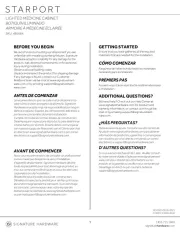
31 Juli 2025